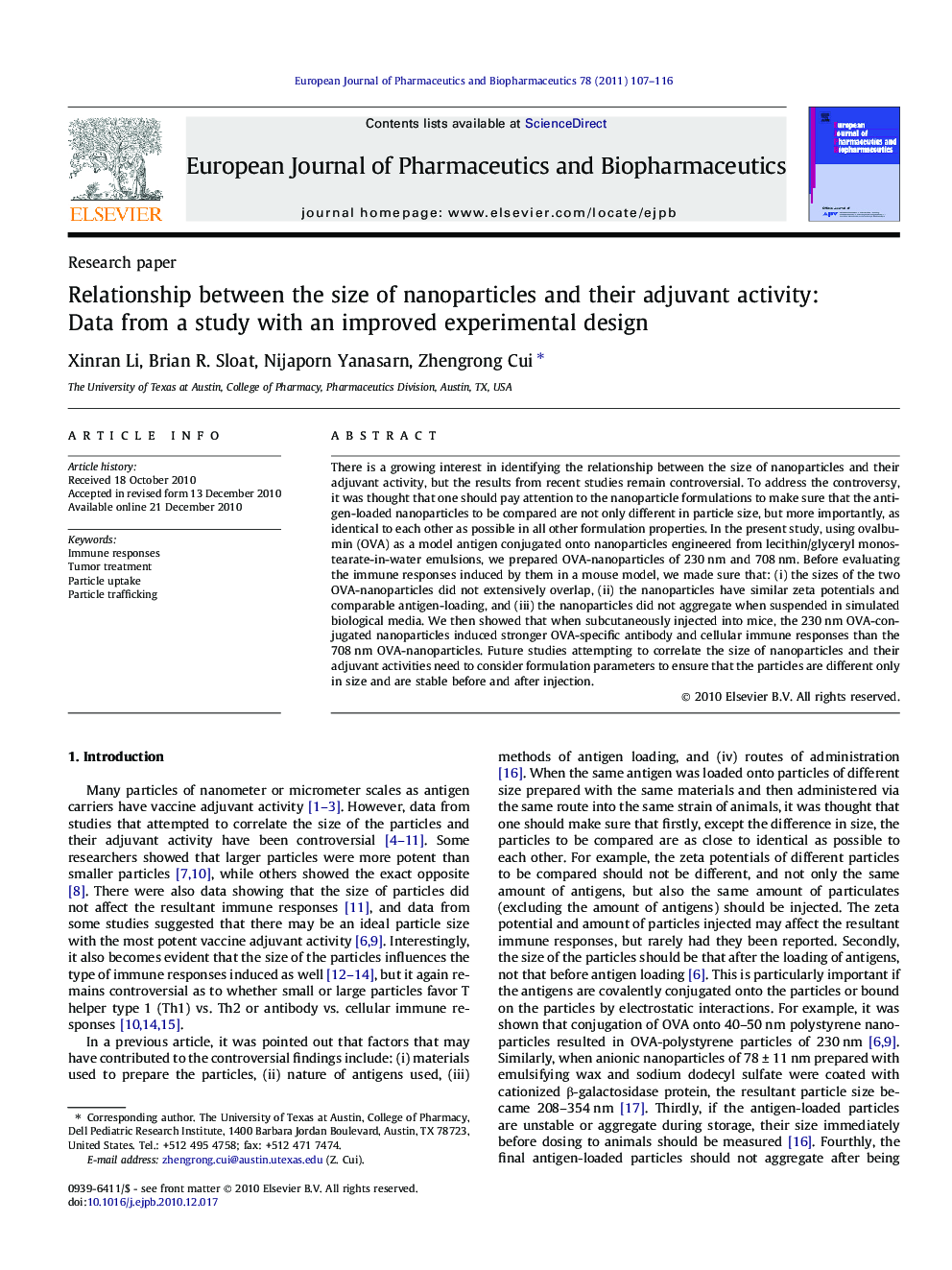| Article ID | Journal | Published Year | Pages | File Type |
|---|---|---|---|---|
| 2084191 | European Journal of Pharmaceutics and Biopharmaceutics | 2011 | 10 Pages |
There is a growing interest in identifying the relationship between the size of nanoparticles and their adjuvant activity, but the results from recent studies remain controversial. To address the controversy, it was thought that one should pay attention to the nanoparticle formulations to make sure that the antigen-loaded nanoparticles to be compared are not only different in particle size, but more importantly, as identical to each other as possible in all other formulation properties. In the present study, using ovalbumin (OVA) as a model antigen conjugated onto nanoparticles engineered from lecithin/glyceryl monostearate-in-water emulsions, we prepared OVA-nanoparticles of 230 nm and 708 nm. Before evaluating the immune responses induced by them in a mouse model, we made sure that: (i) the sizes of the two OVA-nanoparticles did not extensively overlap, (ii) the nanoparticles have similar zeta potentials and comparable antigen-loading, and (iii) the nanoparticles did not aggregate when suspended in simulated biological media. We then showed that when subcutaneously injected into mice, the 230 nm OVA-conjugated nanoparticles induced stronger OVA-specific antibody and cellular immune responses than the 708 nm OVA-nanoparticles. Future studies attempting to correlate the size of nanoparticles and their adjuvant activities need to consider formulation parameters to ensure that the particles are different only in size and are stable before and after injection.
Graphical abstractExcept particle size difference, the small 230 nm and large 708 nm OVA-nanoparticles engineered from lecithin/GMS-in-water emulsions were not different in other formulation parameters, but the former induced stronger antibody and cellular immune responses than the later.Figure optionsDownload full-size imageDownload as PowerPoint slide
